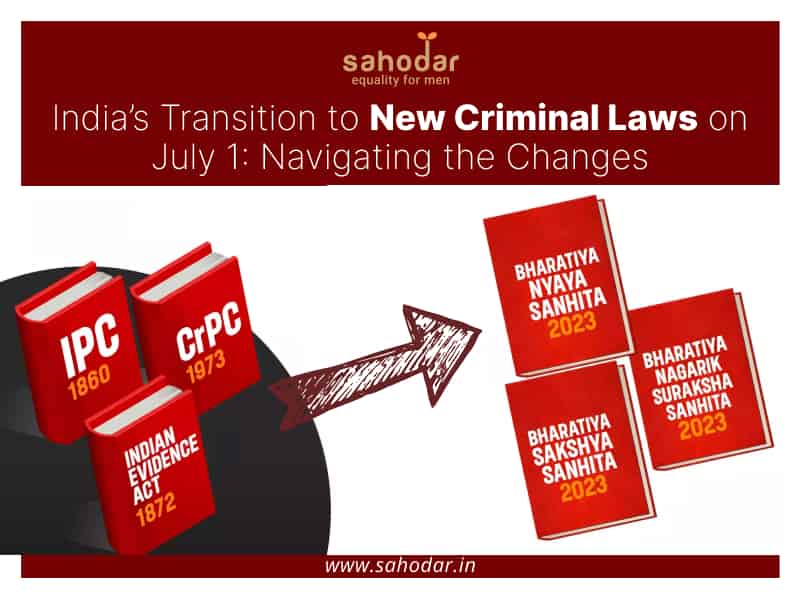On July 1, 2024, India will replace its existing criminal laws with three new criminal laws: the Bharatiya Nyaya Sanhita (BNS), Bharatiya Nagrik Suraksha Sanhita (BNSS), and Bharatiya Sakshya Adhiniyam (BSA). These changes aim to modernize and streamline the justice system, moving away from laws established during British rule.
IPC vs. Bharatiya Nyaya Sanhita (BNS)
The BNS is the updated version of the Indian Penal Code (IPC). It brings several important changes:
- Focus on Women and Children: The new law gives more attention to crimes against women and children, making lying about marriage to have sex a serious offense.
- Death by Negligence: With the increase in road accidents, the punishment for causing death by negligence is now enhanced from two to five years.
- Community Service: The BNS introduces community service as a form of punishment, aiming to balance deterrence with reformation.
- Mob Lynching: Mob lynching is now treated on par with murder, reflecting its serious nature.
- National Security: Activities against national sovereignty and integrity are defined more clearly, though this aspect could be misused by any government.
CrPC vs. Bharatiya Nagrik Suraksha Sanhita (BNSS)
The BNSS replaces the Criminal Procedure Code (CrPC) and introduces significant changes in police procedures:
- Preliminary Inquiry: Before registering an FIR for offenses with punishments between 3-7 years (such as cheating or forgery), the police must conduct a preliminary inquiry to determine if there’s enough evidence.
- Seizure Powers: Investigating agencies now have the power to attach properties, similar to the powers of the Enforcement Directorate.
- Digital Trials: The new law encourages trials via electronic means, allowing witness statements to be recorded through video conferencing and trials to proceed even if the accused is missing.
Indian Evidence Act vs. Bharatiya Sakshya Adhiniyam (BSA)
The BSA updates the Indian Evidence Act with a focus on modern evidence handling:
- Digital Evidence: The new law includes digital recordings from devices like phones and computers as admissible evidence.
- Expanded Definitions: Terms like ‘document’ now include electronic records. The term ‘lunatic’ is replaced with ‘person of unsound mind.’
- Absentee Trials: Trials can proceed in the absence of an accused if they have absconded, ensuring justice is not delayed.
Challenges in the Transition
Switching to the new laws will be challenging:
- Training: Judges and police are receiving training on the new laws, but no mandatory training is provided for lawyers, which could lead to confusion.
- Technology: Many courts lack the necessary technology for digital processes, complicating the implementation of new procedures.
- Legal Overlap: There will be confusion as courts handle cases under both old and new laws. Offenses committed before July 1, 2024, will be tried under the old laws, while those committed after will follow the new laws.
- Potential Misuse: Critics argue that the new laws could give too much power to the police, which might be misused, and that they were passed too quickly without sufficient deliberation.
Moving Forward
Despite these challenges, the new laws aim to create a more efficient and modern justice system. The emphasis on digital evidence and updated procedures could streamline court processes and reduce delays. However, successful implementation will require careful training, upgrading technology in courts, and monitoring to prevent misuse of new powers.
The transition will be a complex process, but with time and effort, it could lead to significant improvements in India’s criminal justice system.

